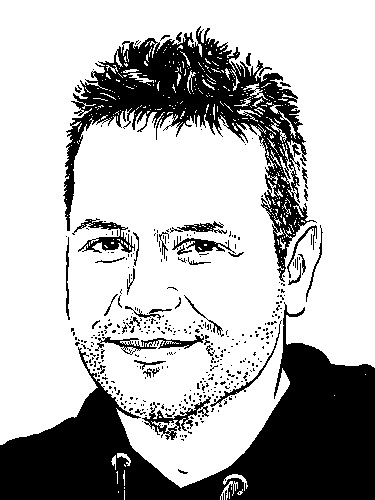Our best estimation of reality.
Text: Angelika Jacobs
The brain tries to make sense of the world. But what happens when it continuously deviates from the truth?
We all carry time machines in our heads. Unconsciously, yet incessantly, our brains jump slightly ahead of the present moment: When the person opposite us drops a book, we know we’re about to hear it hit the floor. The brain produces these expectations because it forms an inner model of the world and our position within it based on our experiences. New impressions enter the brain, come up against these expectations, and together they generate our picture of reality.
Practical as these predictions may be, what we understand to be reality is essentially just our brains’ best estimation of the world. But often it tells tales, for example by filling in the blind spot in the retina so that our field of vision is complete. It also establishes causal relationships that seem most likely based on our internal model of the world.
Update required?
This method employed by the brain is known as “predictive processing” among experts. The elements the method requires can be explained as: First, the brain must compare the sensory impressions it receives with its inner model of the world. If the sensory stimuli don’t meet expectations – for example, if the falling book makes a much quieter sound than anticipated – then the prediction may have been wrong. The brain must then weigh up these prediction errors to decide whether its world model needs updating.
A research team led by neuroscientist Georg Keller (of the Friedrich Miescher Institute and the University of Basel) is attempting to figure out which brain structures are responsible for this. If they manage to identify the relevant groups of neurons, this would be more than just a major advance in brain research: These cell groups would be tangible starting points for new therapies to treat delusions and hallucinations.
Philipp Sterzer, a neuroscientist and Professor of Translational Psychiatry at the University of Basel and the University Psychiatric Clinics in Basel (UPK), is pursuing the exact same goal. His research focuses on the mechanisms behind psychoses with a focus on predictive processing. The theory is that if the brain incorrectly interprets prediction errors, it might update its inner image of the world unnecessarily or fail to correct it when required. Predictions could then drift further and further from what most people understand reality to be.
So, while a healthy brain can be a little inventive – with the best of intentions, such as filling in the blind spot – a brain in acute psychosis may generate impressions or causal relationships where none exist.
Georg Keller and Philipp Sterzer have embarked on a joint project to better understand the circuitry behind predictive processing by looking for the part of the brain that contains the image of the world.
The most likely location is the cortex – the part of the brain responsible for higher-level cognitive processes. Yet, the cerebral cortex is not a homogenous entity; it is more like a complex of buildings with different levels and sections. To find out which of these are responsible for comparison, weighting and the image of the world, the research team is studying the brains of mice.
The home of the inner world model.
By experimenting on mice, Georg Keller’s team and other research groups have found evidence that the levels closer to the skull – layers 2 and 3 of the cortex – are probably in charge of comparing sensory stimuli with the inner world model and calculating prediction errors. This probably occurs multiple times in different sections throughout the cortex depending on which sensory stimuli are being processed.
It is still unclear how exactly the prediction errors then influence the rest of cortex; however, a promising candidate has at least been identified for the location of the inner world model. Keller’s research team were alerted to this possibility when they saw how antipsychotic drugs affect mouse brains. To be more precise, they found that these medications mainly affected neurons in layer 5 (a deeper layer) of the cortex.
“Different antipsychotic drugs used to treat delusions and hallucinations all show the same effect: They reduce the influence that neurons in layer 5 have on one another,” explains Georg Keller. This “decorrelation” appears to help – how exactly it helps is still being researched.
A further indication that layer-5 neurons are the home of the inner world model is that these neurons establish links between distant areas of the brain. These long-distance lines are required to transmit predictions to those areas of the cortex where various sensory impressions are processed.
From mice to humans.
If the hypothesis is confirmed that these neurons are the repository of the brain’s world model, this would also present a starting point for new and more targeted active agents against schizophrenia. First, however, Sterzer and Keller have to find out whether and to what extent the results can be translated from mice to humans. To do this, Sterzer and his team want to use imaging techniques such as functional magnetic resonance imaging (fMRI) and electroencephalography (EEG) to examine more closely the activity and role of layer-5 neurons in humans. The hope is that the more we understand how the brain makes sense of the world, the better we can straighten out its inner world model.
Philipp Sterzer has been Professor of Translational Psychiatry and Chief Physician at the University Psychiatric Clinics Basel since 2022.
Georg Keller is a research group leader with a focus on neurobiology at the Friedrich Miescher Institute for Biomedical Research.
More articles in this issue of UNI NOVA (May 2024).



